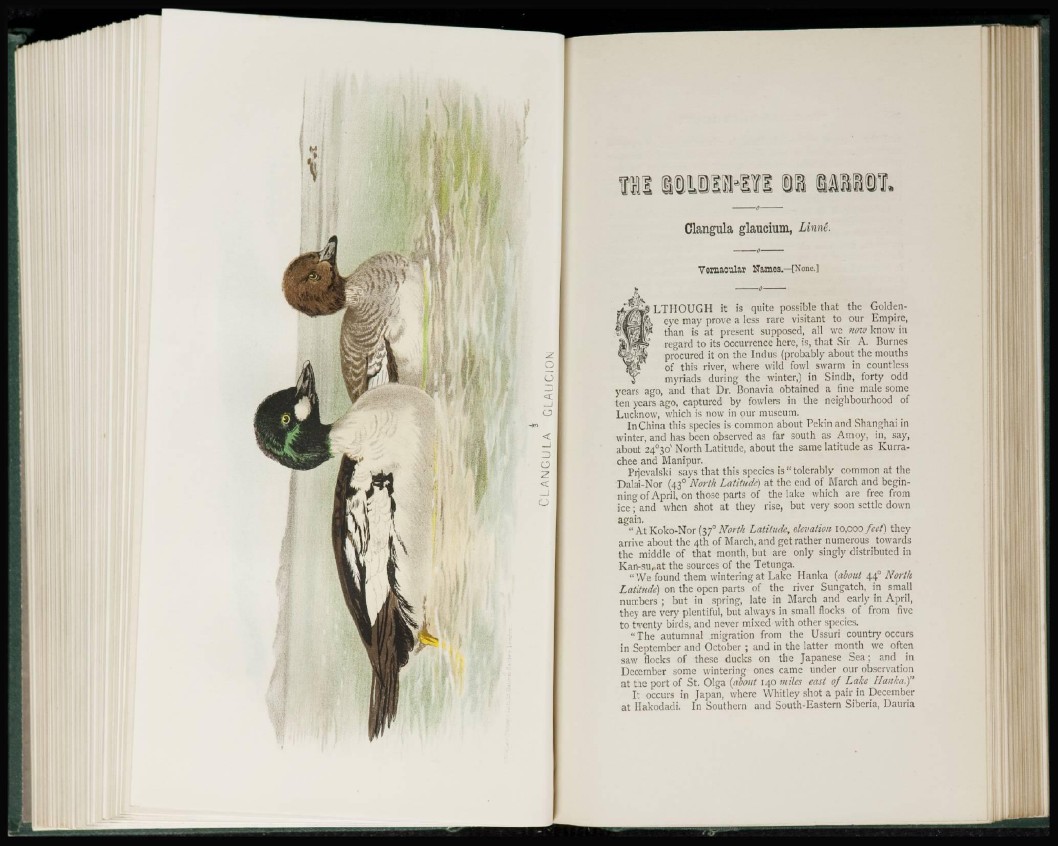
o
o
Clangula glaucium, Linne.
Vernacular Namoa.—[None.]
i LTIIOUGH it is quite possible that the Goldeneye
may prove a less rare visitant to our Empire,
than is at present supposed, all we now know in
regard to its occurrence here, is, that Sir A. Burnes
procured it on the Indus (probably about the mouths
of this river, where wild fowl swarm in countless
myriads during the winter,) in Sindb, forty odd
years ago, and that Dr. Bonavia obtained a fine male some
ten years ago, captured by fowlers in the neighbourhood of
Lucknow, which is now in our museum.
In China this species is common about Pckin and Shanghai in
winter, and has been observed as far south as Amoy, in, say,
about 24°30l North Latitude, about the same latitude as Kurrachce
and Manipur.
Prjevalski says that this species is " tolerably common at the
Dalai-Nor (430 North Latitude) at the end of March and beginning
of April, on those parts of the lake which are free from
ice ; and when shot at they rise, but very soon settle down
again.
" AtKoko-Nor (370 North Latitude, elevation 10,000 feet) they
arrive about the 4th of March, and get rather numerous towards
the middle of that month, but are only singly distributed in
Kan-su, at the sources of the Tetunga.
"We found them wintering at Lake Hanka {about 440 North
Latitude) on the open parts of the river Sungatch, in small
numbers ; but in spring, late in March and early in April,
they arc very plentiful, but always in small flocks of from five
to twenty birds, and never mixed with other species.
"The autumnal migration from the Ussuri country occurs
in September and October ; and in the latter month we often
saw flocks of these ducks on the Japanese Sea; and in
December some wintering ones came under our observation
at the port of St. Olga {about 140 miles east of Lake Hanka.)"
It occurs in Japan, where Whitley shot a pair In December
at Ilakodadi. In Southern and South-Eastern Siberia, Dauria